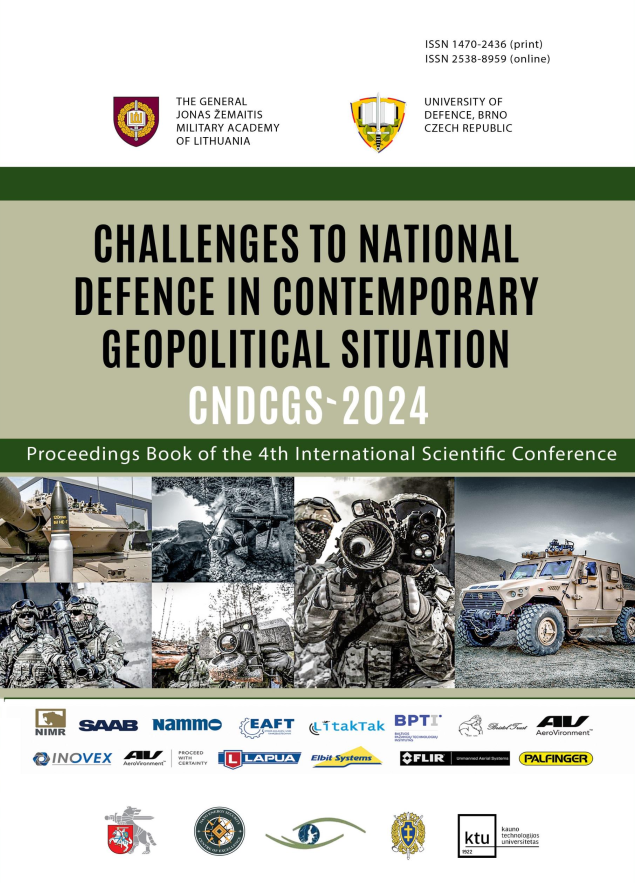Feasibility of Casualty Evacuation by Unmanned Systems
DOI:
https://doi.org/10.3849/cndcgs.2024.29Keywords:
unmanned systems, unmanned ground systems, unmanned aerial systems, unmanned aquatic systems, casualty evacuation, medical evacuationAbstract
Development of unmanned systems has registered unprecedented progress. They provide a wide range of tasks in
contemporary battlefields and the process of finding their new applications is still ongoing. Medical support is one of
the areas where unmanned systems have found their application as well. The aim of the paper was therefore to carry
out research on feasibility of casualty evacuation (CASEVAC) by unmanned systems. Research was executed as
qualitative research using methods of analysis, observation, personal experience, comparison and generalization to
comprehensively describe different aspects of CASEVAC executed by unmanned systems. Furthermore, as and quantitative
research using method of comparison focused on multiple parameters of unmanned systems that are essential requirements
for fulfillment of CASEVAC tasks. Research process started with study of available documents concerning unmanned
systems their analysis based on personal experience and identification of factors that influence feasibility of CASEVAC by
unmanned systems. Furthermore, we compared multiple parameters of different unmanned system solutions with required
ones and identified suitable solutions. We found out that beside unmanned aerial systems that were traditionally deliberated
for CASEVAC tasks great development of unmanned ground and aquatic systems has been achieved. The feasibility of
unmanned systems for CASEVAC was confirmed and areas of further development have been identified. The paper
comprehensively analyzes a variety of aspects that have to be taken into account when considering execution of CASEVAC
by unmanned systems and sort them into categories.
Downloads
Published
Issue
Section
License

This work is licensed under a Creative Commons Attribution-NonCommercial-NoDerivatives 4.0 International License.
All rights preserved. No part of this publication may be reproduced, stored in retrieval system, or
transmitted in any form or by any means, electronic, photocopying, recording or otherwise, without the
permission of the Publisher.





